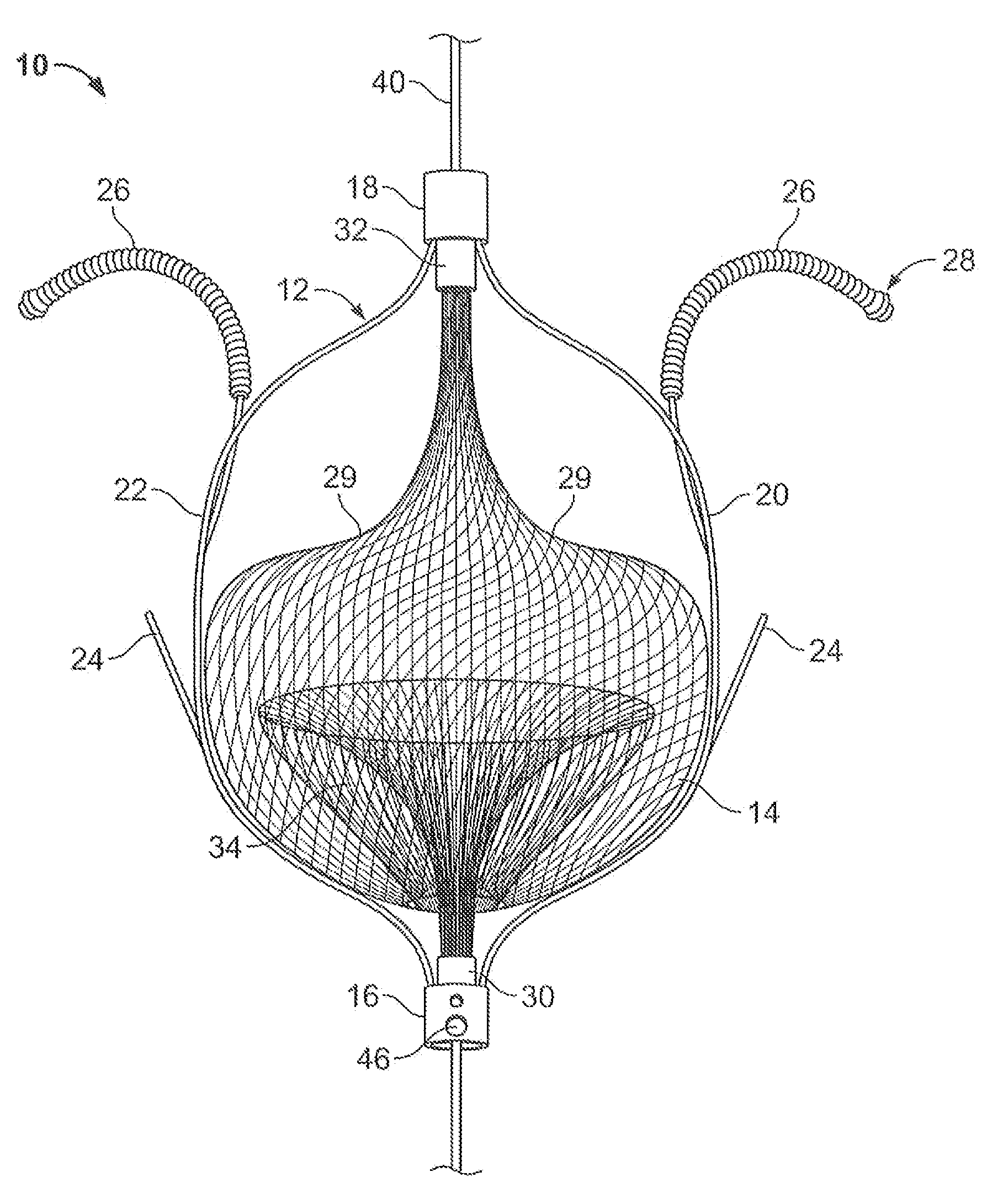Mechanical tissue device and method
a tissue device and mechanical technology, applied in the field of mechanical tissue devices and methods, can solve the problems of high resistance to blood flow, high hemodynamic problems that can be fatal, and very rare patent ductus venosus after birth, and achieve the effect of increasing the length of the device, reducing the width, and ensuring the patient's comfor
- Summary
- Abstract
- Description
- Claims
- Application Information
AI Technical Summary
Benefits of technology
Problems solved by technology
Method used
Image
Examples
Embodiment Construction
[0039]Disclosed are methods and apparatuses for preventing the passage of emboli between a venous blood pool and an arterial blood pools using devices for creating a barrier to the conducting of emboli at a passage between a venous blood pool and an arterial blood pool. The device can treat cardiac defects, such as patent foramen ovale or other atrium septal defects. Although referred to as a filtering device, the device can work by any mechanism including or not including filtering. For example, the embolic filtering device can act as a scaffold for tissue to grow.
[0040]FIG. 2A illustrates an embolic filtering device 10 comprising a frame 12 and an embolic filter 14 comprising a mesh of stranded fabric, wire, or combination thereof. Any and / or all elements of the embolic filtering device 10, including the frame 12 and the embolic filter 14, can be entirely or partially biodegradable and / or bio-inert (e.g., non-biodegrading). After being deployed in the patient, the embolic filterin...
PUM
 Login to View More
Login to View More Abstract
Description
Claims
Application Information
 Login to View More
Login to View More - R&D
- Intellectual Property
- Life Sciences
- Materials
- Tech Scout
- Unparalleled Data Quality
- Higher Quality Content
- 60% Fewer Hallucinations
Browse by: Latest US Patents, China's latest patents, Technical Efficacy Thesaurus, Application Domain, Technology Topic, Popular Technical Reports.
© 2025 PatSnap. All rights reserved.Legal|Privacy policy|Modern Slavery Act Transparency Statement|Sitemap|About US| Contact US: help@patsnap.com



